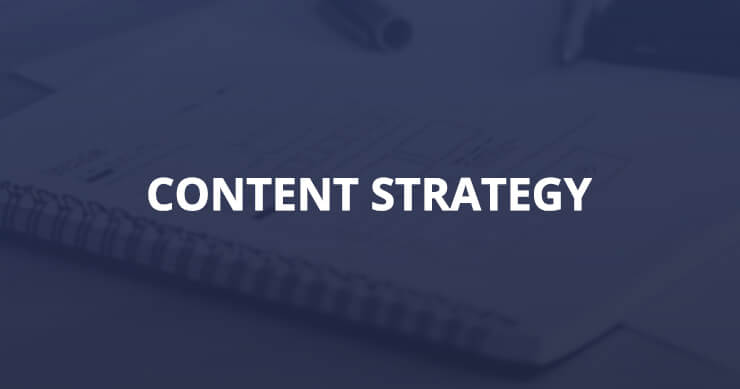This past Sunday, the Super Bowl aired and, as marketers, we were glued to our TVs to see who would win the Brand Bowl. After a year of planning for some brands, the ones that actually caught our attention did so during the unexpected blackout. From Audi to Oreo, these brands and the agencies behind them were fast to respond with clever tweets that won us over and earned them thousands of retweets!
 Here at Outspoken Media we love seeing the data behind those epic tweets, but we recognize that this kind of genius happens because of people–teams built on trust with open collaboration. We wanted to find out how these brands were able to cut through the red tape and let their personalities shine, so we went straight to the source at Audi. Big thanks to Amanda Orson for pointing us to Andy White, the Senior Social Media Manager for Audi who has been trailblazing social media success for the brand for years now.
Here at Outspoken Media we love seeing the data behind those epic tweets, but we recognize that this kind of genius happens because of people–teams built on trust with open collaboration. We wanted to find out how these brands were able to cut through the red tape and let their personalities shine, so we went straight to the source at Audi. Big thanks to Amanda Orson for pointing us to Andy White, the Senior Social Media Manager for Audi who has been trailblazing social media success for the brand for years now.
You can learn more about Andy’s incredible social media accomplishments here, but let’s dive into the questions, which are truly inspiring for both in-house and agency marketers alike! Seriously, I had a grin plastered on my face for hours after reading his responses and I haven’t stopped strategizing since.
Q: From prior interviews you’ve given, it’s clear that Audi understands that marketing during an event like the Super Bowl isn’t about directing viewers to a URL or trying to sell them on a car, it’s about (in your own words) “engaging in naturally forming dialogues that arise from a thought starter.” This seems like a huge evolution from traditional marketing schools of thought, even many digital marketer’s! What had to happen internally to drive this understanding and acceptance within Audi? Who needed to be involved in the early stages of strategy development? Did you have any standout hurdles and/or advocates early on?
A: It helped immensely that a car purchase is so long-tail that there wasn’t that immediate need to get dollars and cents raining down from a bit of linkbait. Once you establish that you’re looking to establish relationships, build awareness, and cultivate ideas among fans and aspirationals, that automatically frees the social marketer to be much more etherial with his goals. Our first ever Super Bowl hashtag, #ProgressIs, set the tone early on for where we were going with this. The next generation of this way of thinking is to react in real-time to unforeseen events, such as we did yesterday during the SB blackout. Twitter is a constantly evolving cultural touchstone and zeitgeist unlike any other social network, and it demands full and total freedom from its SM teams to be used effectively.
Q: You’ve been managing social media for Audi for years with great success. Many probably assume you’re in-house at Audi (I know I did at first), but you’re actually with M80 a social media agency that cultivates social campaigns for brands like Audi, IKEA and AT&T, is that right? To manage the social media efforts of a brand as large as Audi, this has to take a lot of coordination and man power. What does the management and communication side typically look like between you, the M80 team, and Audi?
A: Yes I am with M80, but I have been 100% Audi social media for the past two and something years. I personally started out working embedded in Audi’s HQ in Washington, DC before moving to LA. This practice continues today with other members of my team, and we found it invaluable to build relationships with the client, which has in turn enabled our team to have an amazing amount of autonomy and creative freedom with both our grassroots social and our campaigns.
This is the secret sauce to everything that comes before and after, and it’s so simple: Most social touchpoints your audience will have with your product or brand or whatever is not the bells and whistles campaigns you put together at great expense, but rather the day-to-day social management of all your channels. That’s how they meet you, and that’s where they come to thank you, and it’s where they are going to voice their discontent. So be there for them, take care of them, and give them what they came to you for in the first place.
Q: During Super Bowl XLVII Audi aired the #braverywins commercial, which had a very positive reception, but what captured as much attention was the blackout response:
Sending some LEDs to the @MBUSA Superdome right now…
— Audi USA (@Audi) February 4, 2013
The trust that has to be in place for an agency to represent a brand online and respond in real-time must be immense. Many brands try to mitigate potential reputation problems by setting up a strict approval process or brand guidelines, but that means they can’t adapt like you’ve been able to. What do you attribute the success of the relationship between M80 and Audi to? Was there much prep work leading up to the Super Bowl? Were there set goals and if so, how were those tracked?
A: I think I just scratched the surface of that trust we had between agency and client. A lot of the kudos here has to go to a man at Audi called Doug Clark, for he had the guts to put this way of thinking in place with the huge entity that is Audi of America, and it was from that directive nearly three years ago we were able to succeed at the Super Bowl 2013.
Meet Doug Clark:
Agencies love to bandy around self-aggrandizing terms such as ‘mission control center’, and it sounds grandiose because it is, but it implies a lot of monitors and suits and high-powered executives rushing around to get approval on messaging. Now I assume that does happen, but our approach during these live events is unique in that it’s pure touch and feel (to prove it, refer to my timeline for photos of our ‘command center’).
https://twitter.com/white/status/298280589457489920
Sitting there, on Super Bowl Sunday, that trust had evolved into complete creative freedom, the only boundaries being my own innate knowledge of Audi brand voice and what would and would not work with the audience I have breathed in and out for 700 days.
Nobody knows what’s going to work until the time comes, and don’t let them tell you otherwise, so a lot of pre-planning for these live events outside of laying the groundwork is going to get in the way of what needs to happen on the day itself. Get the right people in the right places and roll with it. This is an art, right? So time to start treating it like one. I had a budget for Twitter ads to create campaigns on the fly as and when I saw a need to pump a flagging term, or roll on a BMW conquesting bit for a fan-created parody video riffing on our own that just happened to pop, and this all supplemented our own engagement in real-time. Two minutes after the lights went dark at the Superdome, Audi tweeted about it in a way that resonated with our fanbase and beyond like never before. It happened that fast, and the rest is history.
Q: You’ve talked a lot about simplicity as a critical part of the brand’s social media success, especially when discussing the 18-month long #WantAnR8 campaign. What does your creative process look like for developing a social media campaign? What’s the criteria for choosing what works?
A: The best campaigns we have produced have evolved either organically – #WantAnR8 – or have come together through a 1,000-mile high remit from the client – ‘Make connection between skiing and Audi for recreational skiers’ – which in turn evolved into our foursquare campaign with the US Ski Team. We’re at the point where there needs to be pushback against those cynical asks to add a social media component to something undeserving at the last minute. We spend months and years cultivating and curating our audience to trust us, to love us, and it’s a respect that needs to go both ways. How many times will agencies push out the ‘Like this if/Share this if’ garbage before we get turned off – permanently?
Q: You’ve mentioned in the past that Tweetdeck is your tool of choice. Is this still the case? What are your other must-have tools for social media management, tracking, or social listening?
A: For real-time response and monitoring, I still use Classic Tweetdeck (not the program Twitter issued post buy-out), and that’s what I used exclusively throughout the Super Bowl. However, I am now a big proponent of Social Flow for management of evergreen content, for content that doesn’t immediately need to go out. We’ve seen engagement increase through its ability to post at optimal times (after examining your account history), and its usage at this point has become something of a no-brainer for me. It’s something I definitely will look to take with me to my next account.
Thank you Andy for taking the time to share your insight and love for the Audi brand. It’s infectious and we hope we can all find ways to keep our campaigns simple, connect honestly, and listen to our communities.


